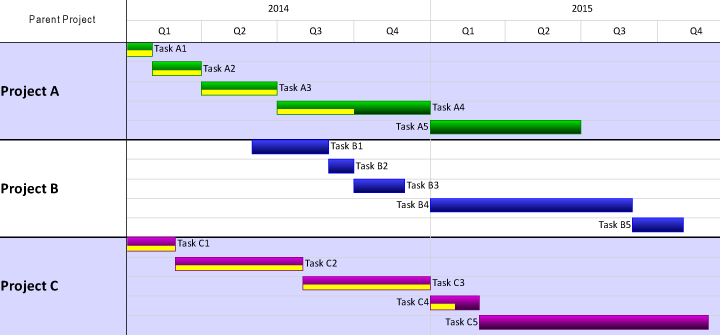A Gantt chart is a powerful tool for project managers to visually track the progress of multiple projects simultaneously. By using a Gantt chart, project managers can easily see the timeline of each project, identify potential bottlenecks, and allocate resources efficiently. This helps in ensuring that all projects are completed on time and within budget.
Additionally, Gantt charts allow project managers to easily communicate the status of each project to stakeholders, team members, and clients. This transparency fosters accountability and collaboration among team members, leading to better project outcomes.
Gantt Chart To Track Multiple Projects
Enhanced Resource Planning
One of the key advantages of using a Gantt chart to track multiple projects is the ability to effectively plan and allocate resources. With a Gantt chart, project managers can see when resources are available and when they are needed for each project, allowing for better resource utilization and preventing overallocation or underallocation of resources.
Furthermore, Gantt charts enable project managers to identify dependencies between tasks and projects, helping them prioritize tasks and allocate resources accordingly. This ensures that projects are completed in the most efficient and cost-effective manner possible.
Streamlined Communication
Another benefit of using a Gantt chart to track multiple projects is streamlined communication. By having a visual representation of project timelines, milestones, and dependencies, project managers can easily communicate project progress and updates to all stakeholders. This reduces the need for lengthy status meetings and keeps everyone informed and on the same page.
Moreover, Gantt charts can be easily shared with team members and clients, allowing them to track project progress in real-time and provide feedback or input as needed. This open communication channel fosters collaboration and ensures that everyone is working towards a common goal.
